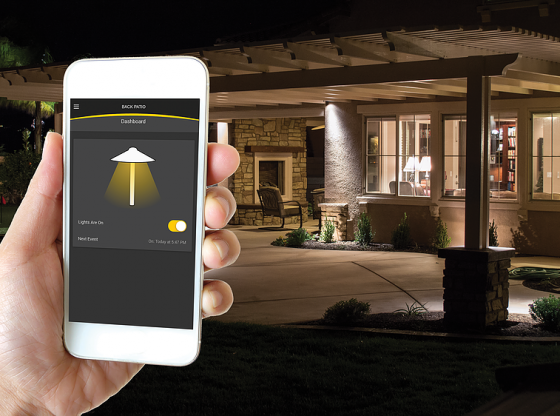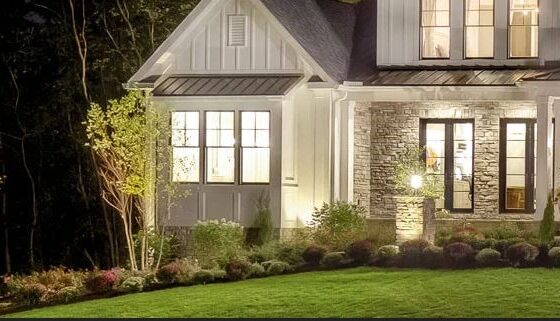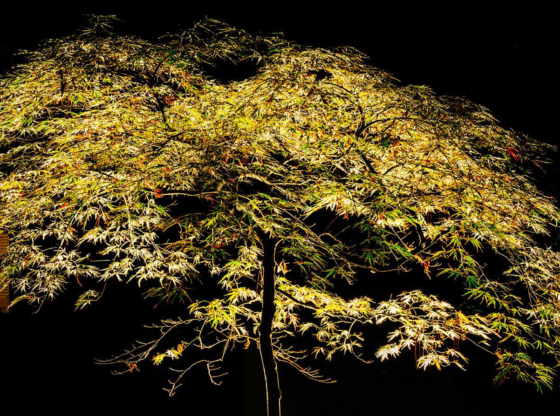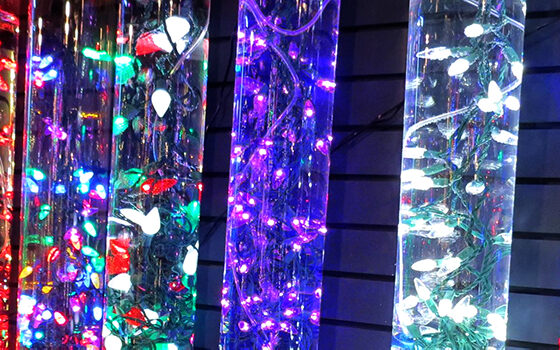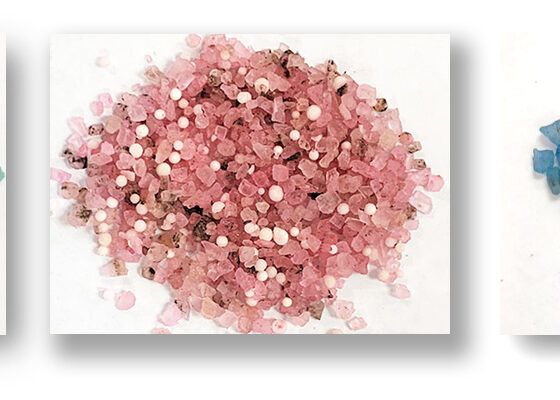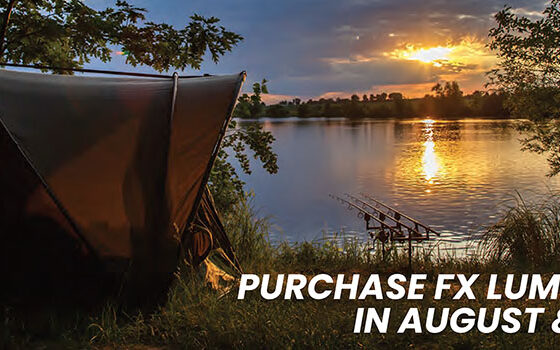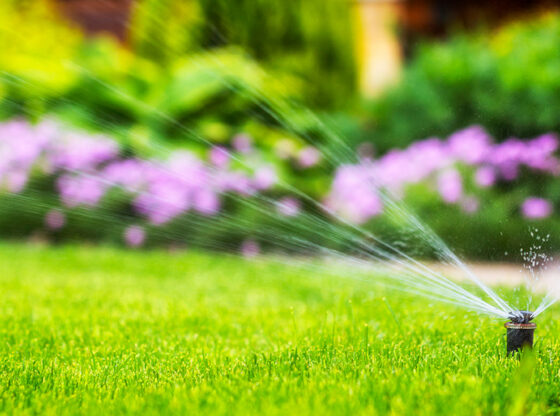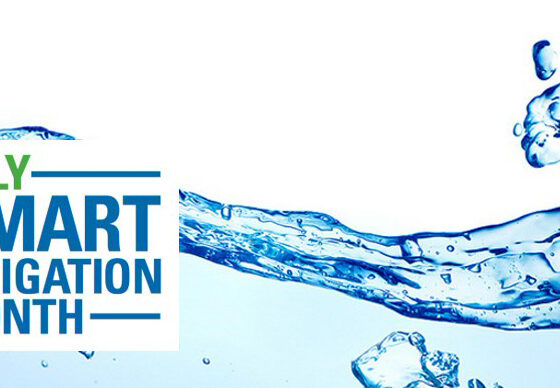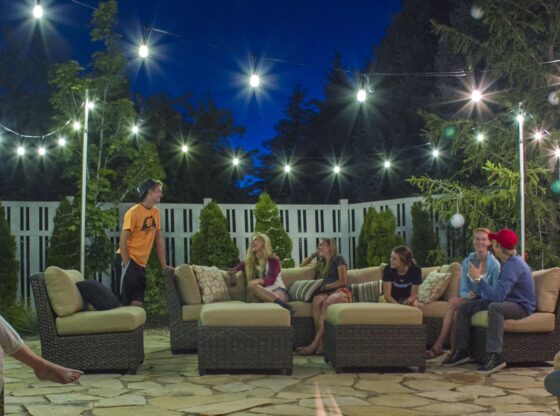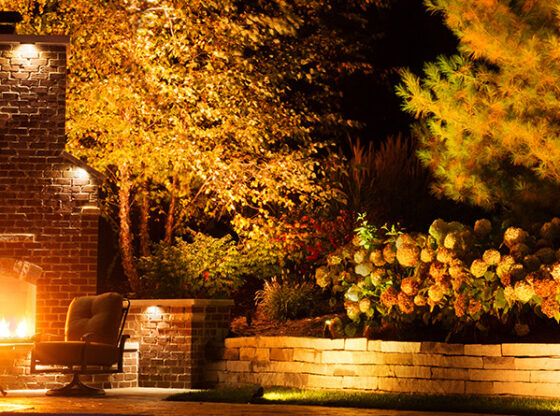Landscape lighting done well enhances not only the curb appeal of the property but also its usability and its beauty. People enjoy illuminated spaces; it makes them feel safe, and they easily grasp what’s in their surroundings. Whether it’s incandescent or LED (Light Emitting Diode), the illumination techniques are the same, but there are several attributes where LED far surpasses incandescent lighting.
Lower Operating Cost
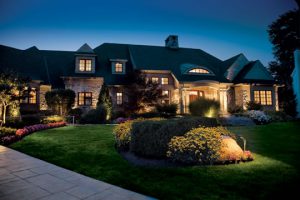 LEDs typically use one-third to one-fourth the load (wattage) of a comparable incandescent lamp, so that is a direct impact to the electrical bill. A 20-watt incandescent lamp is approximately a 4 to 5-watt LED lamp, so the lower the overall load, the less you’re paying to run it.
LEDs typically use one-third to one-fourth the load (wattage) of a comparable incandescent lamp, so that is a direct impact to the electrical bill. A 20-watt incandescent lamp is approximately a 4 to 5-watt LED lamp, so the lower the overall load, the less you’re paying to run it.
Even considering the fact that LED fixtures and lamps are more expensive to purchase upfront, the payback time frame is about three to four years for the electrical savings alone to cover the initial cost. If you add in the labor cost of changing light bulbs on a system, then the payback will be even sooner.
Environmental Impact – Consume Less Energy / “Go Green” / No Mercury
LEDs have a considerably lower impact on the environment. They consume much less energy which reduces their carbon footprint. They are the best available light source from a “go green” perspective. Additionally, LED light sources contain no mercury so they don’t have the end-of-life disposal threats that other sources (like compact fluorescent) pose.
Labor – LED Systems Take Less Time to Design and Less Time to Install
Because LED is so much more forgiving (wider voltage ranges, lower wattage load, constant current, etc.) it’s much easier to specify a design with LED than incandescent. While it’s wise and recommended to properly calculate wire and transformer loads on every job, using LED has almost rendered calculations obsolete for the average residential (small to medium size) installation.
As for installation, being able to work with fewer wire runs, connect more fixtures to a single run of wire, and having to manage and bury fewer wire runs all help to simplify the installation and make it go faster. Time is money, so the faster you can install a job (while maintaining quality and elevated levels of workmanship) the better your profitability. Lighting is an EASY and PROFITABLE add-on to every landscape, hardscape, irrigation, and water feature installation project.
It’s a wonderful thing when a contractor can do “X” number of installs, yet increase the profit margin by double or triple without adding any overhead! The crew is already there, so keep them busy.
Less Maintenance / Fewer Wire Runs
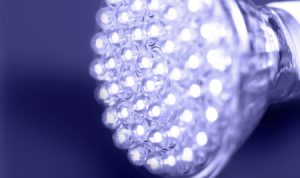
It’s always prudent to install wire and fixtures in “safe” places. Running wire along hardscapes as much as possible (house foundation, edge of driveway/sidewalk, etc.) helps keep it out of harm’s way. Wiring can get nicked or cut in planting beds, chewed on by rodents, etc., but when there are fewer wire runs this equates to less vulnerability. As for fixtures, unless you’re installing a flush-mounted fixture below grade that’s meant to be run over with a lawn mower, no fixture should ever be installed in turf.
Fixtures in turf are a nuisance for people to mow around, they get run over or whacked out of place, or they get weed whacked to death. There will always be some maintenance needed for fixtures because plants grow, frost heave can push a stake out of the ground, irrigation can deposit minerals on lenses and that build-up can diminish light output.
However, because LED is so much more long-lived, it isn’t necessary to swap out lamps like incandescent, but routine maintenance is required to maintain the original intent of the design. A terrific way to winter over your crew is to offer maintenance contracts on landscape lighting. This allows you to add to your revenue stream during slow times and keep your crews busy.
Ease of Use – Wide Voltage Range / Selection of Kelvin Temperatures
LED light sources come in two primary types: 1) integrated fixtures and 2) drop-in or “retrofit” lamps. Voltage ranges can differ by manufacturer and can run 9v – 15v, 8v – 22v, 10v – 15v, etc. By comparison, a typical voltage range for incandescent is 10.8v – 12v. LED’s lower loads and wider voltage ranges combine to allow contractors to run longer wire runs with more fixtures without suffering significant voltage drop or decreased lumen output (brightness).
Additionally, manufacturers can make LED fixtures and lamps with specific Kelvin temperatures; 2700 Kelvin is a warmer/incandescent looking color of light, while 3000 Kelvin is a crisper/whiter tone of light. Being able to choose a desired Kelvin temperature (light color) is advantageous because using the right light color can enhance how an object looks. A good rule of thumb is to use a warmer Kelvin temp on warmer colored objects (reds/oranges/yellows/taupe/tan/white, etc.), and use a cooler Kelvin temp on cooler colored objects (blues, greens, greys, white, etc.). If in doubt, choose 3000 Kelvin because on most accent fixtures you can add an amber lens and it will warm up the color of the light to around 2700 or so.
Smaller Equipment / Less of it
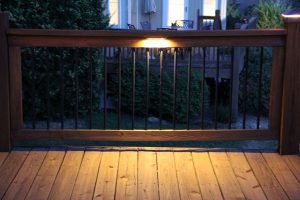 One of the key advantages of LED is its lower wattage load. Because it’s lower, you can specify smaller equipment. So if you had an incandescent installation that was 450 watts you would specify a 600W transformer. That same job in LED would be around 100 – 120 watts, so you could specify a 150W or 200W transformer. Additionally, wire is specified based on gauge, and gauges differ based on thickness and number of copper conductors. You can use thinner wire with smaller loads.
One of the key advantages of LED is its lower wattage load. Because it’s lower, you can specify smaller equipment. So if you had an incandescent installation that was 450 watts you would specify a 600W transformer. That same job in LED would be around 100 – 120 watts, so you could specify a 150W or 200W transformer. Additionally, wire is specified based on gauge, and gauges differ based on thickness and number of copper conductors. You can use thinner wire with smaller loads.
NOTE: Because most transformers have a 25 Amp breaker in them, your smallest “home run” wire (main wire that is run from a group of fixtures and connected to the transformer’s terminal strip) should be 12/2 AWG. This is because it also has a 25 Amp capacity. If you run smaller gauge wire (14/2, 16/2, 18/2) into the transformer it might not trip the breaker, thus you’ve inadvertently bypassed a key safety mechanism built into the transformer.
Won’t Burn Plant Material Due to High Heat but Warm Enough to Melt Snow
LEDs do not generally produce a lot of heat, but there is enough to melt snow…it just takes a little while longer than incandescent. The flip side of that is the damage that high heat incandescent lamps do to plant material. It can burn foliage and destroy entire plants just from the surrounding heat a fixture emits.
Longer Life / Resistance to Thermal and Vibration Shock
LEDs are a solid state semi-conductor light source with two leads. When voltage is applied, electrons recombine with electron holes and release energy in the form of photons which emit light. LED does not have a fragile filament that heats up to produce light like incandescent lamps.
Because LEDs are much more robust, they have a longer life. Diodes do not however like heat, so reputable manufacturers go to great lengths to engineer LED fixtures and LED drop-in lamps to withstand heat and vibration damage. On average, an LED MR16 lamp has an average life span of 40,000 hours. If that lamp is on six hours per night, 365 days a year, then that lamp is forecasted to last 18+ years. As with any lamp, it degrades over time, and so do LEDs, but technology makes it take a lot longer.
Warranty
LED lamp manufacturers offer some sort of warranty, but incandescent lamps have none because of their fragility. LED warranties can range anywhere from 2 years to 6 years on drop-in lamps, and for integrated LED fixtures can be as high as 10 to 15 years.


